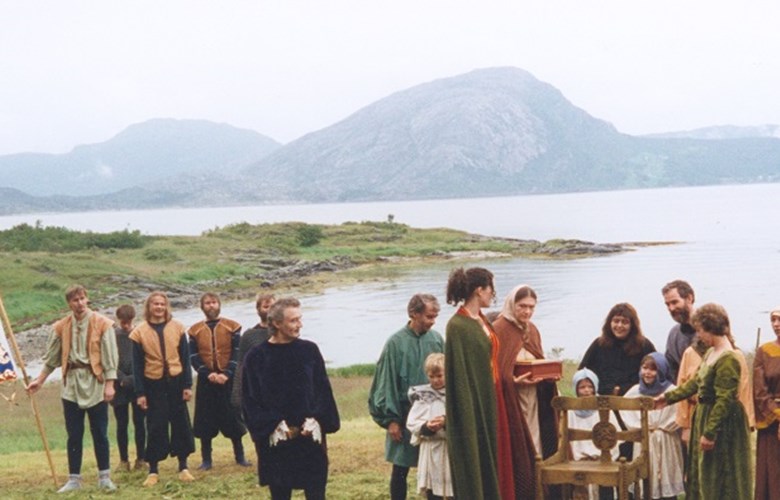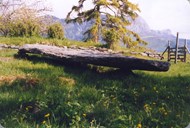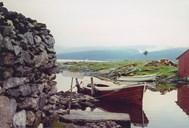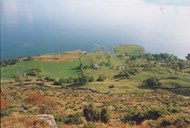Small island - powerful family
Losna, the easternmost of the Solund islands, is mountainous with little space for settlements. However, on the east side there is a plain large enough for a small cluster of farms. From here the powerful Losna family had their name.
The first known member is Filipus Erlendson from Osland at Bjordal. He lived in the early 14th century and moved to Losna, probably because of his marriage with Ingebjørg Erlendsdotter. Their son Erlend Filipusson of Losna was the first of the family who found his way into the national government. He became a "riksråd" (cabinet member) in 1369. In the years after he was a "fehirde", or minister of finance, and in 1405 he became the magistrate of the whole Gulating jurisdiction.

Nobility and national renown
The third generation, Einride Erlendson, went farthest. Queen Margrete of Denmark unified the three Scandinavian countries under her own personal rule. Her power was based on the principle of paying most to those most loyal, and Einride was her great favourite. Einride was knighted in 1397 in Kalmar, as a reward for his contribution in bringing about the union. He became a "høvedsmann" (royal administrator), first of Akershus, later Tunsberghus, and then of Bergen. He also served as "sysselmann" (royal governor) in Møre, in Ryfylke, and in Agder, and, in addition, he was given a number of foreign policy responsibilities.
When the family could rise to the top of the power elite in only two generations, this was probably due to high abilities. But also because they realized that the new, unified Scandinavia was the right policy.
Struggle for the succession
Erlend Einrideson was expected to carry on the family. He became a member of the "riksrådet" (royal cabinet), as his father and grandfather had been, and was knighted. He had no sons, and his daughter died childless after two marriages. The greater part of the huge Losna estate, which in its time,made up 1/24 of all surveyed land in Norway, was, in accordance with family ties - and court decision - in 1539 taken over by the Rosenkrantz family.
Losna, with its central and strategic location, was in itself a base for power and position. From here, the traffic on the Sognefjord, partly north/south along the coast, could be controlled. Close by is the strait of Tollesundet, and its name indicates that vessels travelling north - and south - had to pay duty here.
No reliable traces
The powerful family however, has not left visible, reliable traces at Losna. The knights themselves could not very well sit at home at the main seat, and an archaeological survey has so far not been carried out. Two huge slabs of rock, Bårehella in the yard and Torsbordet down by the sea, are perhaps reminiscences of the golden age. Likewise, the name Bussevika (bussa: big, wide vessel). At Kyrkjeneset the bishop Neumann in 1820 could still see traces of the church and some graves. The church building, mentioned in 1360, may have been a chapel for the noble family at Losna. And perhaps a very big stone in a granite fence near Bårehella is a remnant of a building.
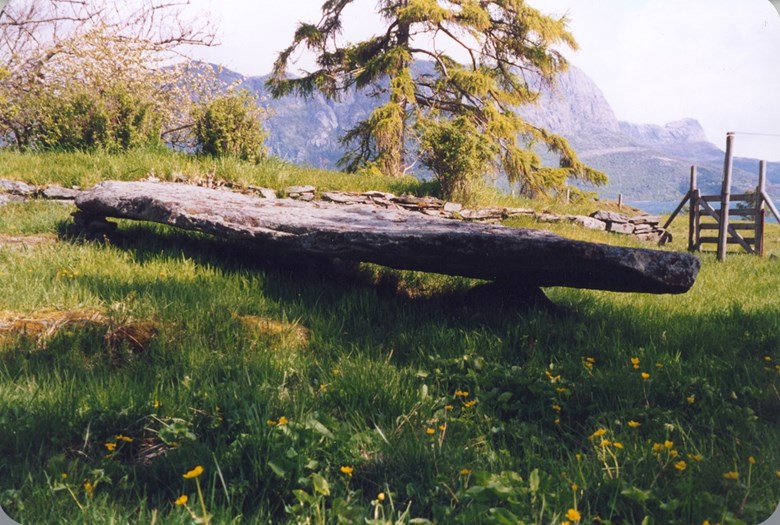
The Losna chronicle play at Kyrkjeneset
The family has later settled in various parts of the country, and many of its members, together with others, find their way to the island every time the Losna chronicle play is performed. The author Rolf Losnegård, who has roots at Losna, has written the historical love drama Herr Einride til Losna (Mr Einride of Losna). The background is the 1300s and fictitious people who were close to Einride.
The island, once the main seat of one of our wealthiest families, has in later years struggled with a declining population. The building of summer houses and other initiatives for tourism, among them a ferry quay, has managed to maintain the population and lead to optimism.

